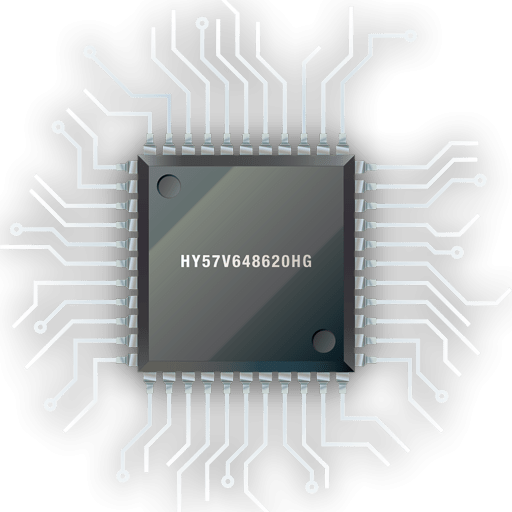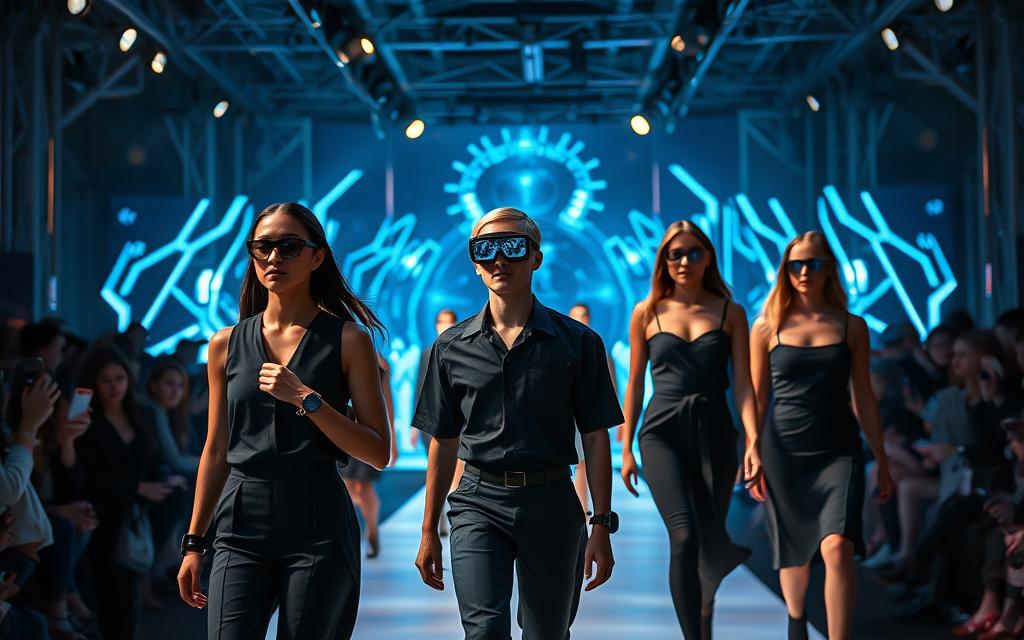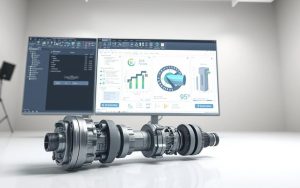Electronic devices we wear on our bodies have changed a lot. They have smart sensors and can connect to the internet. This has changed how we use technology every day.
In 1961, Claude Shannon at M.I.T. made the first wearable computer. His work started a big change in personal electronics.
Now, we see amazing fashion tech collaborations between fancy brands and tech companies. These partnerships have made useful gadgets into stylish pieces that fit well with today’s clothes.
The latest wearable tech trends show how useful and pretty things can be together. This mix has changed how fashion is designed. It has opened up new ways for us to show who we are.
The Historical Convergence of Technology and Fashion
Technology and fashion have been together for decades. This journey has moved from simple gadgets to today’s smart wearables. It shows how useful and stylish items can be made together.
From Digital Watches to Smart Accessories
In the 1980s, we saw the first calculator watches. They mixed basic computer functions with telling time. These early gadgets showed how tech could fit into everyday things.
The 1990s brought early fitness trackers. But they were much simpler than today’s devices.
The 2000s saw big steps forward with Bluetooth headsets and iPods. These items added wireless tech and music. Claude Shannon even had a timing device in a shoe in 1961 for roulette players.
This shows how tech slowly became part of our daily items. Each decade added new features, leading to today’s smart wearables.
Pioneering Brands in Wearable Fashion Tech
Some companies saw tech could make fashion better. They tried to mix electronics with clothes and accessories. They faced many challenges and doubts from others.
These early tries helped create today’s smart clothes and gadgets. They showed people wanted both style and function in their tech.
The table below highlights key milestones in wearable technology development:
| Decade | Innovation | Significance | Leading Brands |
|---|---|---|---|
| 1980s | Calculator Watches | First integration of computing with accessories | Casio, Seiko |
| 1990s | Basic Fitness Trackers | Early health monitoring technology | Polar, Nike |
| 2000s | Bluetooth Devices | Wireless connectivity in wearables | Motorola, Apple |
| 2010s | Smartwatches | Comprehensive device integration | Apple, Samsung |
These early efforts built the base for today’s wearable tech market. They showed tech could improve fashion without losing style. This led to more consumer personalisation and smarter gadgets.
The mix of tech and fashion keeps getting better. This journey shows how far we’ve come from simple watches to today’s smart fashion.
How Has Wearable Technology Changed the Fashion Industry
Technology has changed fashion in big ways. Clothes are now more than just looks; they help us in our daily lives. They connect us, monitor our health, and adapt to our surroundings.
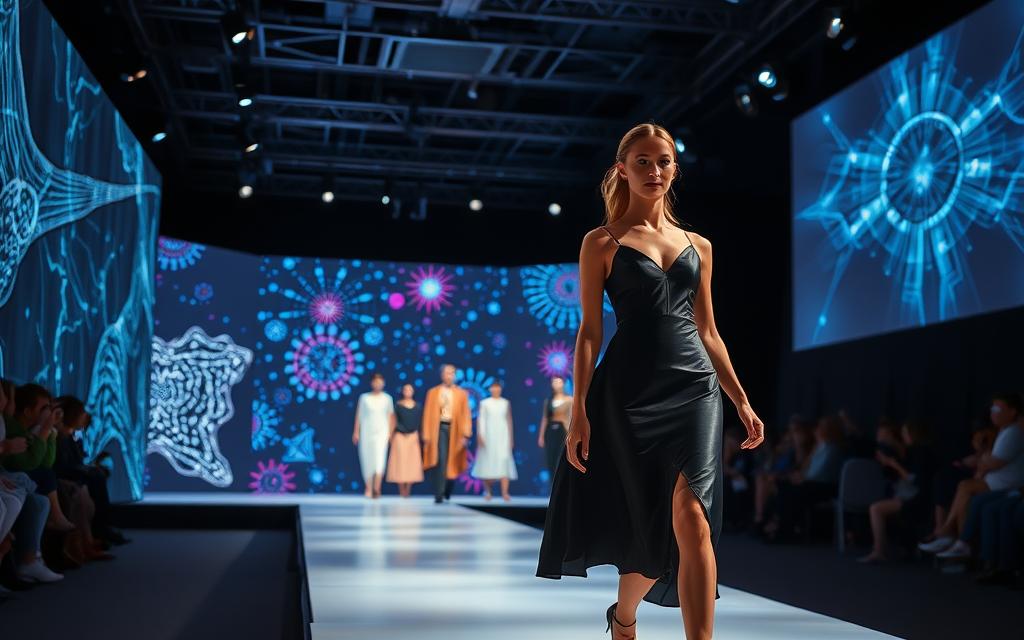
Redefining Functionality in Fashion Design
Old clothes were mainly for looks and comfort. Now, designers add tech to clothes, making them interactive. This change has made clothes more than just something to wear.
Today’s clothes can track our health and activity. They can even sense our stress levels. This is a big step forward in how clothes help us.
Clothes now connect with other devices easily. You can find jackets with headphones, dresses with lights, and bags that charge your phone. This shows how clothes are adapting to our needs.
Modern smart fabrics change with the weather. They keep us cool or warm, depending on the temperature. They also dry us off when we’re active.
The push for ethical fashion tech is growing. Makers now think about the whole life of tech clothes. They focus on using materials responsibly and making clothes that can be recycled.
The New Metrics of Fashion Performance
We now judge clothes by more than just how they look or feel. How well they work with tech is key. People want clothes that work smoothly with their gadgets.
How accurate clothes are matters a lot. Sensors need to give us real data. How long clothes last on a charge and how easy they are to charge are also important.
How well clothes work with our devices matters. They need to connect easily with our phones and other gadgets. Clothes that are easy to use make us happier.
| Traditional Metrics | New Tech-Enhanced Metrics | Measurement Tools |
|---|---|---|
| Fabric durability | Battery longevity | Charge cycle testing |
| Colour fastness | Data accuracy | Biometric validation |
| Comfort level | Connectivity reliability | Signal strength testing |
| Aesthetic appeal | User interface simplicity | Usability studies |
| Production cost | Tech integration cost | Component analysis |
Now, we also look at how clothes affect the planet. We check how much energy they use and how they’re made. This helps us make greener clothes.
People’s needs keep pushing clothes to get better. The mix of fashion and tech opens up new possibilities. We can expect even more cool tech in our clothes soon.
Smart Fabrics and Revolutionary Materials
New materials make clothes that change with the weather and our bodies. These advanced textiles are a big change from just keeping us warm. Now, clothes can interact with us, acting like personal ecosystems.
Biometric Monitoring Clothing
Today’s sports wear and everyday clothes have built-in sensors. These sensors track heart rate, breathing, and muscle activity without needing extra gadgets.
The sensors are made from special fibres woven into the fabric. This keeps clothes comfy while they monitor our health all day.
Key benefits include:
- Real-time health data collection during normal wear
- Non-invasive monitoring without additional equipment
- Seamless integration with mobile health applications
- Early detection of possible health issues through pattern analysis
Temperature-Regulating and Adaptive Fabrics
Phase-change materials and thermoregulatory textiles are big steps in comfort tech. These fabrics adjust to our body heat and the weather to keep us at the right temperature.
Smart fabrics adjust to temperature changes, so we don’t need to wear so many layers. This makes clothes more comfy and helps the planet by using less energy for heating and cooling.
Adaptive clothing means we don’t need as many clothes in our wardrobes. The materials use tiny phase-change substances that soak up, store, and release heat as needed.
This shows how material science meets augmented reality fashion. The future looks bright for clothes that adjust to our physical and digital worlds.
Wearable Technology’s Impact on Consumer Experience
Wearable technology has changed how we interact with fashion. It offers new, interactive experiences that add value to clothes. This change is a big part of the wearable tech trends in today’s retail world.
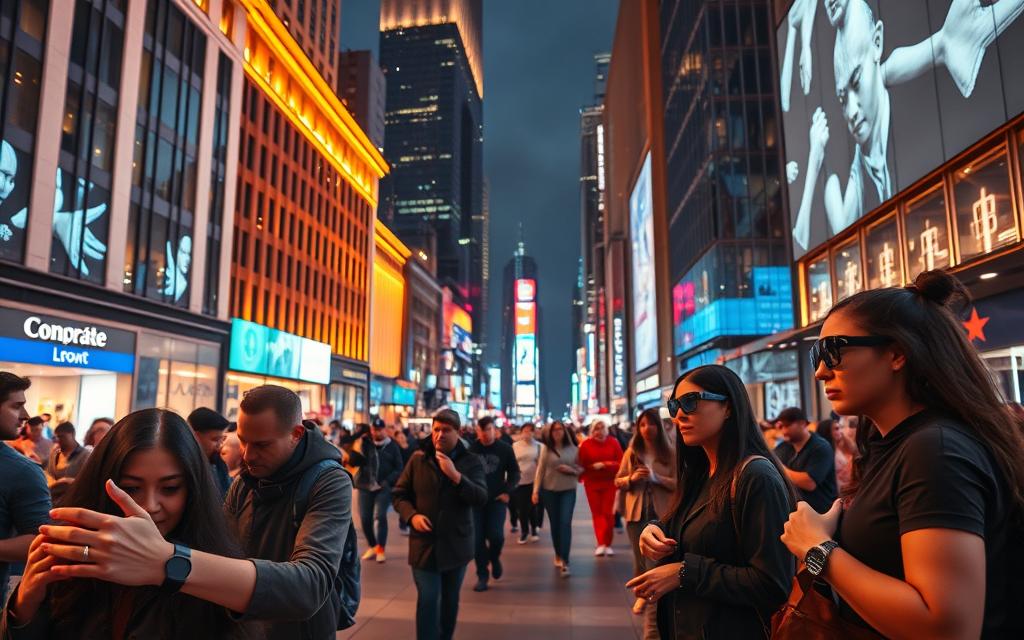
Personalisation Through Technology
The old days of one-size-fits-all fashion are over. Now, wearable devices and smart clothes offer customisation. You can get clothes that change colour or fit better based on your body.
With AI in fashion, your style, body, and even mood can guide your outfit choices. This personalisation goes beyond looks. It includes features like temperature control and comfort based on your body’s needs.
Many brands are leading this trend:
- Smart jewellery that changes design based on mood detection
- Adaptive footwear that adjusts support throughout the day
- Interactive accessories that learn and anticipate user preferences
The Data-Driven Shopping Experience
Today’s shoppers enjoy better experiences thanks to advanced data use. Virtual try-on tech lets you see clothes without trying them on. AI style assistants give you outfit ideas based on your style.
This data-driven approach changes shopping online and in stores. Retailers can now:
- Match inventory with your preferences in real-time
- Predict your size with 98% accuracy
- Offer style suggestions based on what you already own
Wearable tech and retail systems work together for a smooth shopping journey. You get alerts for new items that fit your style. Stores arrange their layouts based on data from smart devices.
| Technology Type | Consumer Benefit | Data Collected | Personalisation Level |
|---|---|---|---|
| Smart Fitting Rooms | Virtual try-ons | Size preferences, style choices | High |
| Wearable Style Assistants | Outfit recommendations | Colour preferences, occasion needs | Very High |
| Biometric Clothing | Perfect fit assurance | Body measurements, comfort levels | Maximum |
| Interactive Accessories | Mood-based adaptations | Emotional responses, environmental data | Medium-High |
This advanced retail approach is at the forefront of wearable tech trends. It makes shopping more intuitive, responsive, and personal. The mix of fashion and tech is changing how we express our style.
Notable Fashion-Tech Collaborations and Products
Technology and fashion have come together in exciting ways. Big tech companies and fashion brands have teamed up. They’ve made products that are hits and have changed what we think wearable tech can do.
Apple Watch and High Fashion Partnerships
Apple changed how we see smartwatches with fashion tech collaborations. They worked with luxury brands like Hermès. This made the Apple Watch more than just a tech device; it became a fashion statement.
These partnerships showed how tech can fit into high-end fashion. The Hermès bands were made of premium leather. They had designs inspired by equestrian themes, appealing to those who love style and function.
Apple didn’t stop at just one partnership. They made a whole system where consumer personalisation was key. Users could mix bands to show off their style.
Google’s Project Jacquard and Levi’s Collaboration
Google’s Project Jacquard was a game-changer in wearable tech. It teamed up with Levi’s to make the Commuter Trucker Jacket. This jacket had interactive denim with tech woven into the fabric.
This jacket let users control their phones with sleeve gestures. The tech was hidden, keeping the jacket looking good while adding smart features. It showed how tech can improve clothes without losing their style.
This partnership was a hit because it offered consumer personalisation in a new way. Users could set the touch-sensitive parts to do different things, based on what they needed.
| Collaboration | Key Innovation | Consumer Benefit | Market Impact |
|---|---|---|---|
| Apple & Hermès | Luxury smartwatch bands | High-fashion tech accessory | Bridged tech and luxury markets |
| Google & Levi’s | Interactive denim technology | Gesture-controlled clothing | Pioneered smart fabric integration |
| Various brands | Custom-fit clothing from body scans | Perfect sizing through wearables | Revolutionised online clothing shopping |
These partnerships are just the start of tech changing fashion. As innovations grow, they open up new chances for designers and buyers.
Body scanning tech from wearables has changed fashion. It lets brands offer clothes that fit perfectly, without needing to try them on. This solves a big problem in fashion and shows the good side of tech and fashion together.
Sustainability and Ethical Considerations
Wearable tech is changing fashion, but it has a big environmental impact. Adding electronics to clothes brings new challenges. Brands that think ahead know they must balance tech with caring for the planet.
E-Waste in Fashion Technology
Many electronic parts in clothes can’t be recycled easily. Smart clothes have batteries and sensors that might break. Unlike regular clothes, these can’t be given away or recycled the usual way.
When tech fails, people often throw away the whole outfit. This adds to the problem of electronic waste. It goes against the idea of ethical fashion tech, which values keeping things going longer and fixing them.
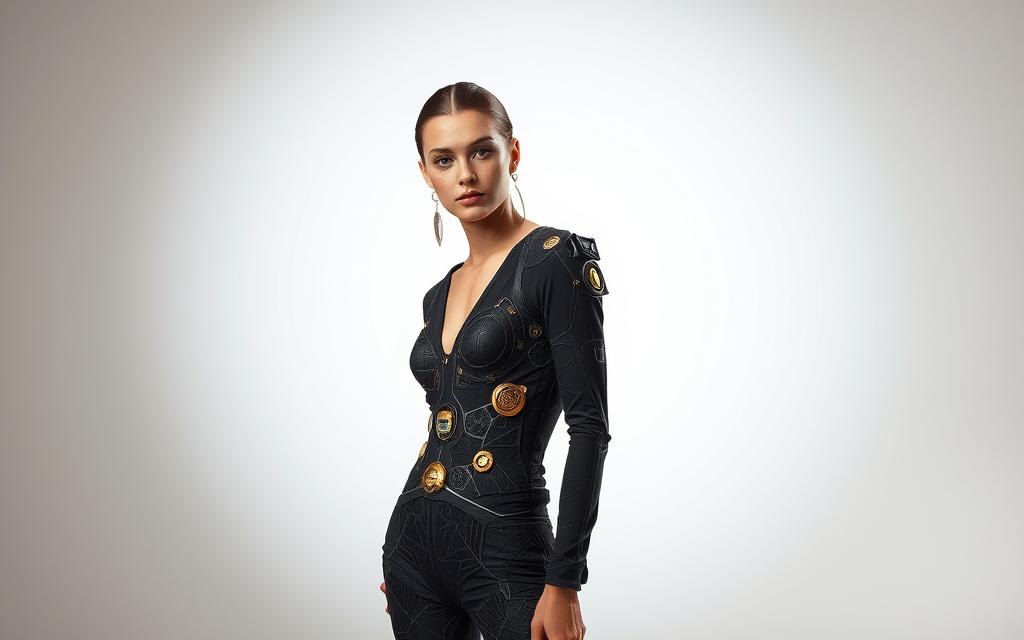
Sustainable Tech Fashion Initiatives
Some companies are working on making tech fashion more eco-friendly. They’re making materials that can be recycled and used again. Others are creating clothes that make energy from movement or body heat.
Designing clothes with parts that can be swapped out is becoming popular. This makes clothes last longer and cuts down on waste. It’s all about ethical fashion tech.
There are also projects on making electronics that can break down naturally. And making clothes in ways that don’t harm the environment. These steps show that tech can help make fashion more sustainable, not less.
Future Directions for Wearable Fashion Technology
Wearable technology is growing fast, making fashion more like science fiction. New ideas are changing how we use clothes and accessories. They make our experiences smarter, more interactive, and tailored just for us.
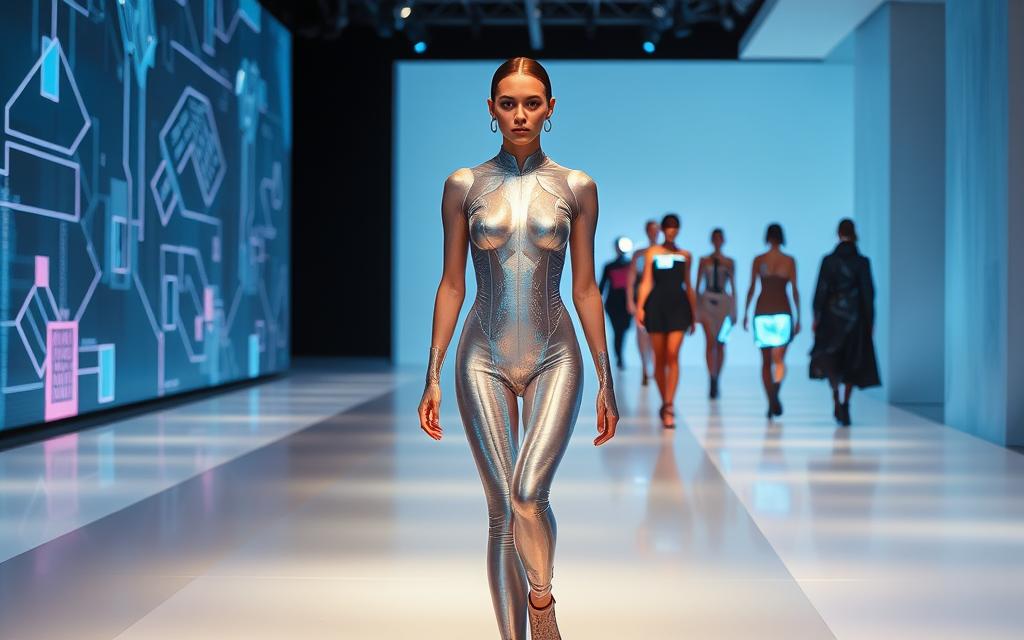
Augmented Reality in Fashion Retail
Augmented reality in fashion is very exciting. It lets people see how clothes look on them without trying them on. This helps avoid wrong sizes and cuts down on returns.
Big names in retail are adding virtual try-on features to their apps. You can see how clothes fit with your style and size. You can even try on outfits virtually for fashion shows and home fitting rooms.
This mix of online and offline shopping is a game-changer. It gives valuable insights into what customers like. Soon, you might even shop with friends virtually, trying out outfits together.
AI Integration and Predictive Fashion
Artificial intelligence is changing fashion to meet our needs. AI looks at your data, the weather, and your plans to suggest outfits. It gets better over time based on what you like.
Predictive fashion looks at many things:
- What you like and how you fit
- The weather and seasons
- Upcoming events and plans
- What you already own and have bought
Some ideas even use sensors to see how you’re feeling. They might suggest clothes that match your mood. Soon, clothes might change colour or style based on where you are.
| Technology Type | Current Applications | Future Potentials | Key Benefits |
|---|---|---|---|
| Augmented Reality | Virtual try-ons, digital showrooms | Holographic fashion presentations | Reduced returns, enhanced engagement |
| AI Integration | Style recommendations, size predictions | Emotion-responsive clothing | Personalisation, waste reduction |
| Smart Fabrics | Temperature regulation, biometric monitoring | Energy-generating textiles | Comfort, functionality, sustainability |
| Predictive Systems | Weather-based suggestions | Anticipatory fashion choices | Convenience, appropriate dressing |
These technologies are coming together to make clothes part of our digital lives. Soon, clothes might power devices or change colour with the surroundings. This will keep changing how we see fashion, technology, and self-expression.
Conclusion
Wearable technology has changed the fashion world a lot. It mixes style with new ideas in exciting ways. Designers now add functions to clothes, going beyond just looks to create interactive pieces.
Today’s wearable tech trends focus on making things personal and useful. Smart fabrics are at the forefront. They track health and change to fit your needs, making clothes more comfortable and practical.
But the industry also cares a lot about being green. It’s working hard to reduce waste and find eco-friendly ways to make things. Companies like Apple and Levi’s show how working together can lead to big improvements.
As we look to the future, AI and augmented reality will change fashion even more. The mix of tech and style is always growing. This means a bright and changing future for wearable fashion.
